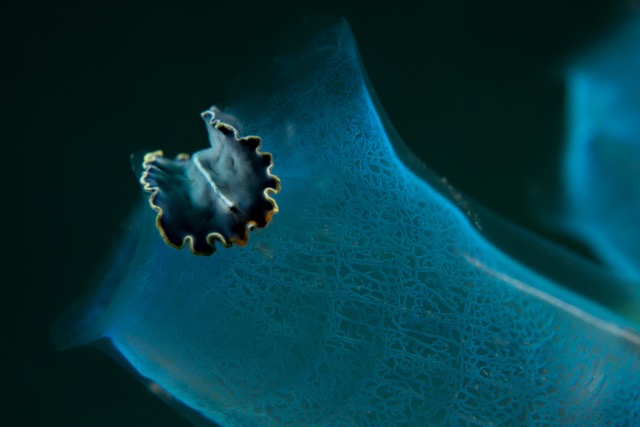Not Your Typical Worm
|December 6, 2022


Have you ever experienced this whilst diving? Your dive guide shows you those air quote finger gestures, which you already know means nudibranch. Upon closer inspection, despite appearing colourful and slug-like, something just doesn’t seem right. Commonly mistaken for nudibranchs or other marine molluscs, flatworms are actually from the Phylum, Phatyhelminthes, from the Greek words platy meaning flat, and helminth meaning worm. They are much more closely related to parasitic worms such as Cestodes, more commonly known as ‘Tapeworms’, however these colourful free living aquatic worms (Turbellaria) will cause you no harm.

As the name suggests, they are flat. Actually they are so flat (no more than 1mm) that their soft bodies contain no skeleton, no body cavities, and no specialised circulatory or respiratory systems, instead, their bodies are flattened to allow for the diffusion of oxygen and carbon dioxide. Because of their lack of structure, they are extremely fragile, and will tear very easily when stressed. However, much like other flat worm species, they have incredible regenerative abilities, and can regrow and replace an injured body piece. The space between the top and bottom is filled with a connective tissue that acts as a skeleton, allowing muscles to attach, and branching intestines that allow nourishment to quickly spread around the body.
Turbbellaria vary in size, however they are usually small, ranging from just 3 mm to around 50mm – with a few larger species existing. Many times their true body size is difficult to measure because they are frequently crumpled into odd shapes. Their bodies are always oval shaped and are bilaterally symmetrical, meaning the left and right side of the body are a mirror image of each other. This also means they have a distinct top/bottom, and front/rear.
To move around, flatworms can secrete a layer of mucus and crawl along this using cilia on the underside of their bodies. Some species also have a suction pad on their underside to help them cling onto the surface. Many of the larger species can actually swim by undulating the sides of their bodies in the same way a ‘Spanish Dancer’ nudibranch would.
Being flat with no internal body cavity doesn’t mean flatworms cannot swallow their prey. Instead of swallowing their food before digesting, they push their pharynx (a part of the gut) out of their mouth, engulfing their prey. They will then inject digestive juices and begin swallowing the dissolved matter. As most flatworms do not have an anus, they will spit out any bits they cannot digest. Most marine flatworms are carnivorous, preying on invertebrate such as sea squirts and other worms or molluscs. Their flattened body allows them to easily find their way into the shells of bi-valves such as mussels, clams and oysters, therefore, can be considered pests of oyster farms. Other species of flatworm are scavengers, feeing on dead animals.
Marine flatworms are hermaphrodites, meaning they contain both male and female reproductive organs. When two flatworms meet, they will exchange sperm, often by stabbing their needle like penis anywhere into their mates body, unsurprisingly known as ‘Hypodermic Impregnation’. Some species will attempt to impregnate its mate, without being impregnated itself to avoid the burden of producing the eggs. Species that do this will take part in an epic battle before mating, known as ‘penis-fencing’ where the individuals effectively have a sword fight, with the loser having to produce the eggs. Similar to nudibranchs, the eggs are laid in gelatinous masses, however some flatworms will only lay a few eggs, and the hatchlings do not hatch into a larval form, instead hatching into miniature adult flatworms. Many species are able to reproduce asexually by dividing their bodies to clone themselves, much like coral polyps. This method is not preferred, as there are there are genetic disadvantages to reproducing this way.
They are commonly found on coral reefs and sandy slopes throughout the tropics. Here in Bunaken Marine Park we have many opportunities to spot them while diving on the colour walls around Bunaken and Siladen, or while muck diving on the muddle slopes of North Sulawesi.While most species are active mainly at night, there are some that are around during the day, such as the brilliant blue ‘Racing Stripe Flatworm’, which we frequently see crawling along our local shipwreck. They employ beautiful colourations and mimicry as a defence mechanism, looking similar to poisonous species of nudibranch, making them fantastic macro photography subjects that often get overlooked by many divers.